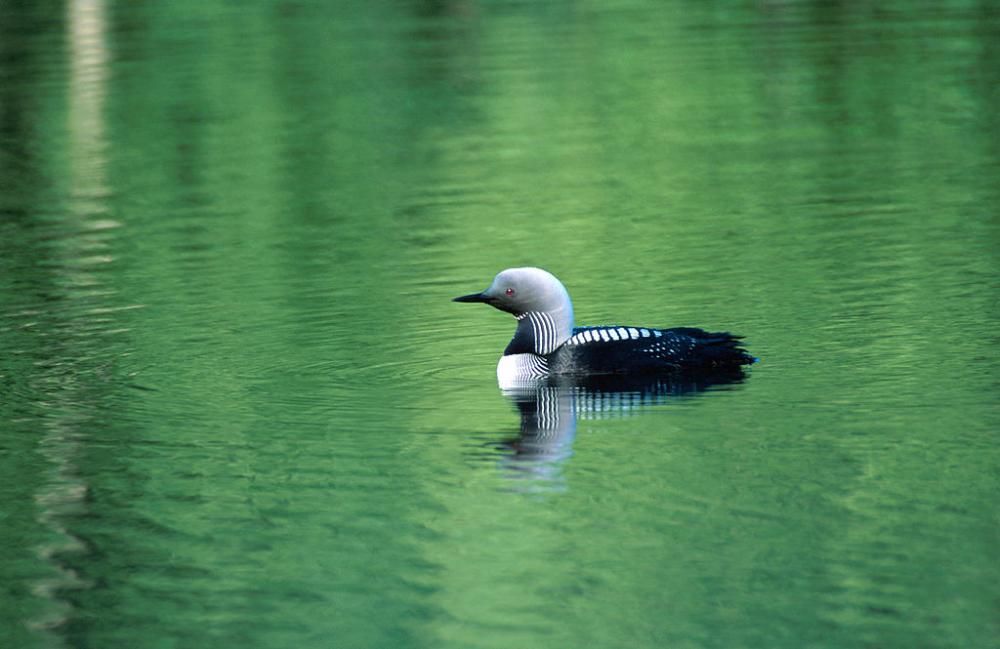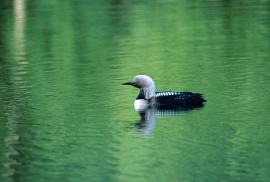Guide to Boreal Birds
Overview
Until recently thought to be a form of the Old World's Arctic Loon (Gavia arctica), the Pacific Loon is well named, for nearly all of these birds winter along the Pacific Coast of North America except for a few birds that delight birders by appearing at scattered locations along the Atlantic seaboard. In the east, it is the rarest and least known of the three loons found there. More social than other loons, this species frequently gathers in large flocks. On the northern breeding grounds adults often fly many miles between their nesting ponds and suitable feeding areas. It usually feeds closer to shore than other loons; its diet consists mainly of fish, but on the breeding grounds it also takes crustaceans.
Description
24" (61 cm). A small loon with straight, slender bill. In breeding plumage, head pale gray; neck and back black with white stripes; throat black with purple reflections. In winter plumage, blackish above, white below; often shows thin "chin strap."
Voice
A harsh kok-kok-kok-kok; wailing notes on breeding grounds.
Nesting
2 spotted olive-brown eggs, usually in a slight depression lined with aquatic vegetation (sometimes on bare ground) at edge of water.
Habitat
Breeds on lakes and ponds in tundra and northern forests; winters on coastal bays and inlets and on the ocean.
Range/Migration
Breeds from Alaska east to Hudson Bay, and south to northern British Columbia, Manitoba, and Ontario. Winters chiefly along Pacific Coast; very rare in northeastern United States.



